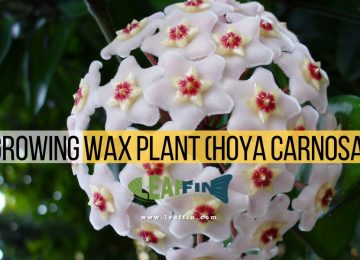The genus Nymphae that are commonly referred to as ‘water lilies’. There are so-called Hardy Water lilies and Tropical Water lilies, the former tolerating winter conditions. Tropical water lilies have day-blooming and night-blooming varieties.
Tropical water lilies are considered to be the showiest and largest of the group. Day blooming varieties have flowers that open up from about late morning till late afternoon. If they are grown in full sun or catch the rising sun, then the flowers may open a bit earlier. Night bloomers open from dusk until early or late morning. The flowers generally open and close for 3-4 consecutive days. Tropical water lilies can be grown in small tubs of about 1 meter diameter, not necessarily requiring ponds. The miniature varieties are especially excellent, though they do not have the showy and large flowers of their bigger relatives. Large varieties can be flowered in tubs such as large water jars, but judicious pruning of their leaves is required as they spill over the edge. Portions of leaves not in constant contact with water will turn brown and shrivel up, looking quite unsightly.
Tropical water lilies come in virtually all hues of the rainbow, including a green variety called “Green Smoke”. The majority of varieties sold in nurseries are hybrids with equally colourful names such as “Wow” (a deep red). “Yellow Sensation” and “Wood’s Blue Goddess”. Unfortunately like many plants in Singapore, water lilies are sold without the cultivar’s name and are just referred to as red, pink, white etc. This is also the case for plants such as frangipani, hibiscus, lotus and bougainvillea to name a few. Nurseries should improve the naming of plants so as to enhance the knowledge of gardeners. When it comes to plants such as water lilies and frangipani, other characteristics such as fragrance, size and/or colouration of leaves play a major part in the decision to purchase. Many water lily leaves are attractive with red blotches on them; some have serrated edges while others are smoothly rounded and some varieties have an absolutely dazzling purplish-red on the underside.
Water lilies are very easy to grow, provided they are given adequate sunlight and fertilizer to flower. Ideally they should receive a monthly dose of slow release fertiliser, wrapped up in several layers of kitchen towels or newspaper to form a small roll or “popiah”, which is then inserted into the soil close to the plant (at least 5cm away). Our plants receive 2 handfuls of slow-release fertilizer, wrapped up in 2 ‘popiahs’ every 6-8 weeks. This appears to be the absolute minimum as anything less frequent than that results in an obvious decrease in growth and flowering. New leaves are very much smaller, and flowering ceases. Granular fertilizer is not encouraged for 2 reasons: it has a greater risk of burning the plant, which can be potentially fatal, and the sudden release of nutrients from this type of fertilizer promotes the development of algae.
MOSQUITO CONTROL
For mosquito control, certain larvicides are available in nurseries. We however, have found Siamese Fighting Fishes to be an effective and charming way of controlling mosquito larvae. These fishes are air breathers and require no external source of oxygenation, unlike goldfishes or Kois. The latter 2 species of fish also eat water plants, and are not really compatible in anything other than a fairly large expanse of water. Large Kois are also known to uproot small water lilies, probably in their search for food. A reliable combination is one male and several female fighting fishes in a large tub. We have kept 2 adult males successfully together in a large tub where fallen or dead leaves at the bottom offer refuge for the fishes to hide and can demarcate their territories. Juveniles co-exist quite happily until their colouration intensifies, signaling maturity. We have not had as good results with other fishes like Guppies, although we know of people who find them useful. The only drawback is that this requires constant vigilance to check that fishes are still alive. We do not supplementary feed our fishes except when starting with a new plant. In time, an ecosystem will develop which will support them.
We have not encountered any serious problems with pests- most pests such as water snails and beetles disfigure leaves and can be either tolerated or physically removed. We do not spray with insecticides and find that a good ecosystem in our tubs and around the rest of our garden keeps things at an equilibrium.
Propagation is by division of the tubers. Plantlets will also develop at the periphery of the parent plant and can be carefully dug out and repotted. Separate the rooted plant from the sprouted tuber, and spread the roots out in the container before planting. Water lilies need to be under about 6-12 inches of water when mature, whereas Lotus (Nelumbo) requires only about 3-6 inches. Certain day-blooming tropical water lilies display a viviparous vegetative mode of reproduction. A young plant emerges from a swelling in the centre of the leaf, at the junction of the leaf blade and stem. Roots eventually emerge and these leaves carrying young plants can be removed and anchored down to a shallow container filled with 1 inch of water.


